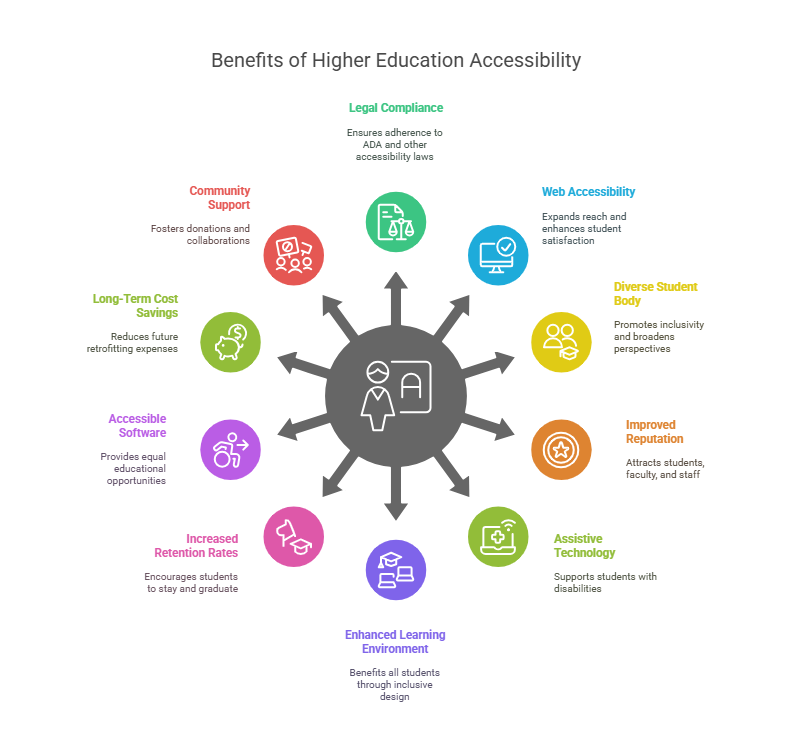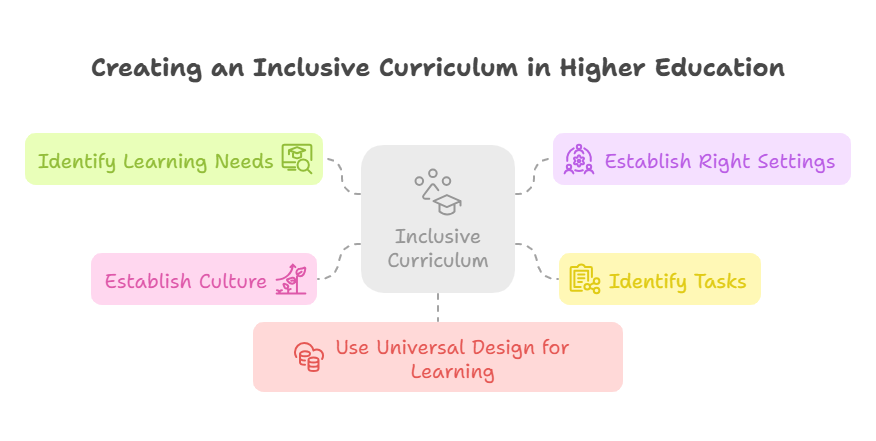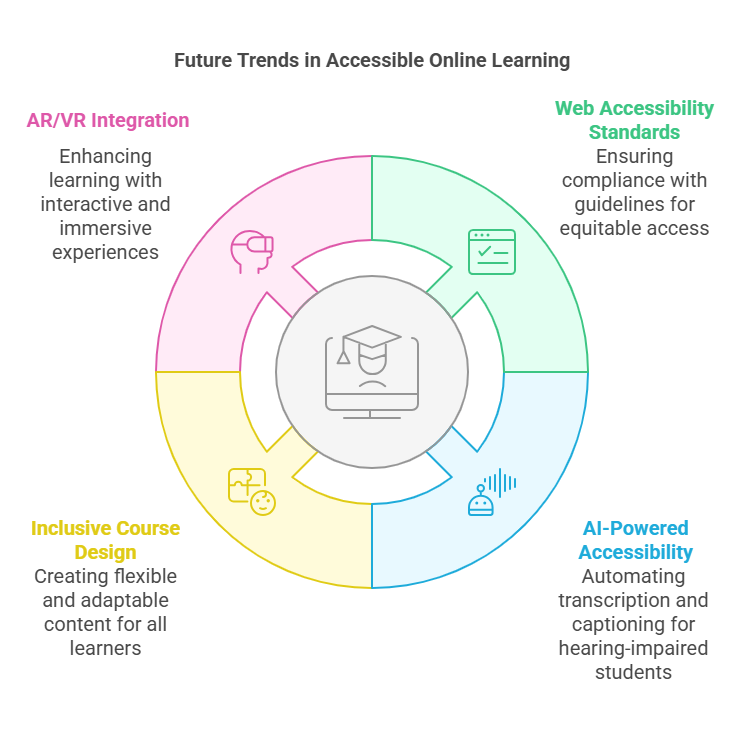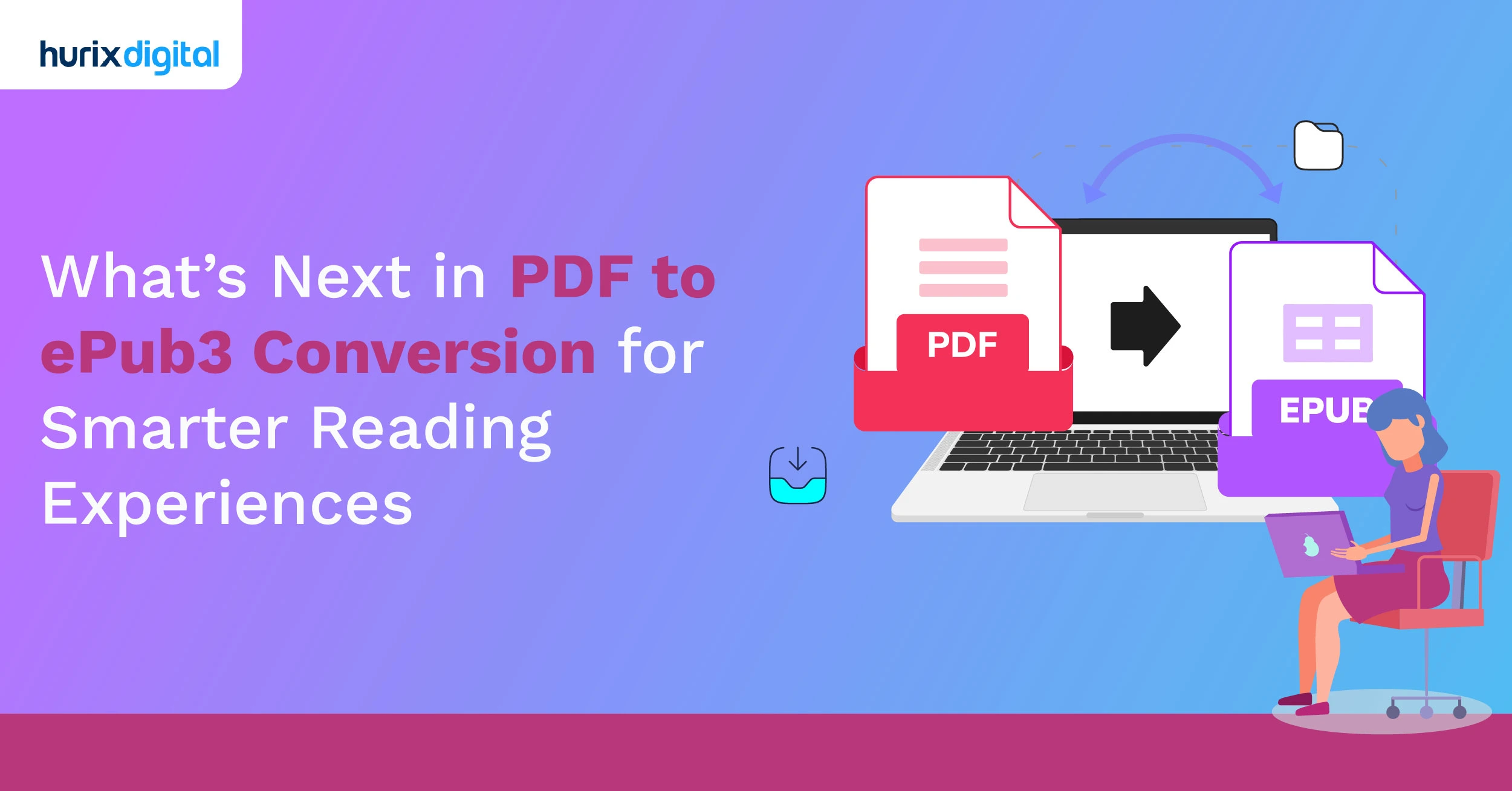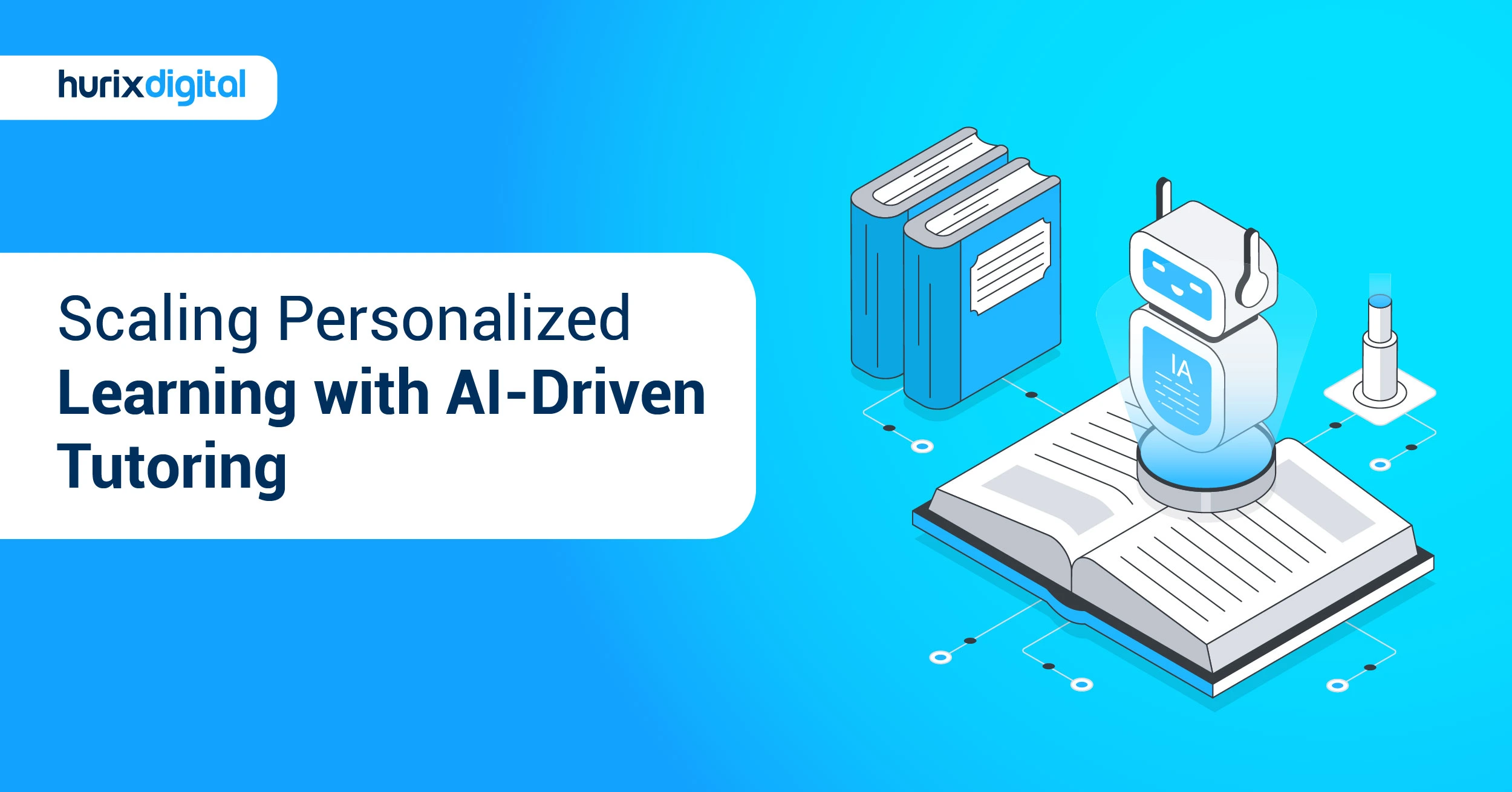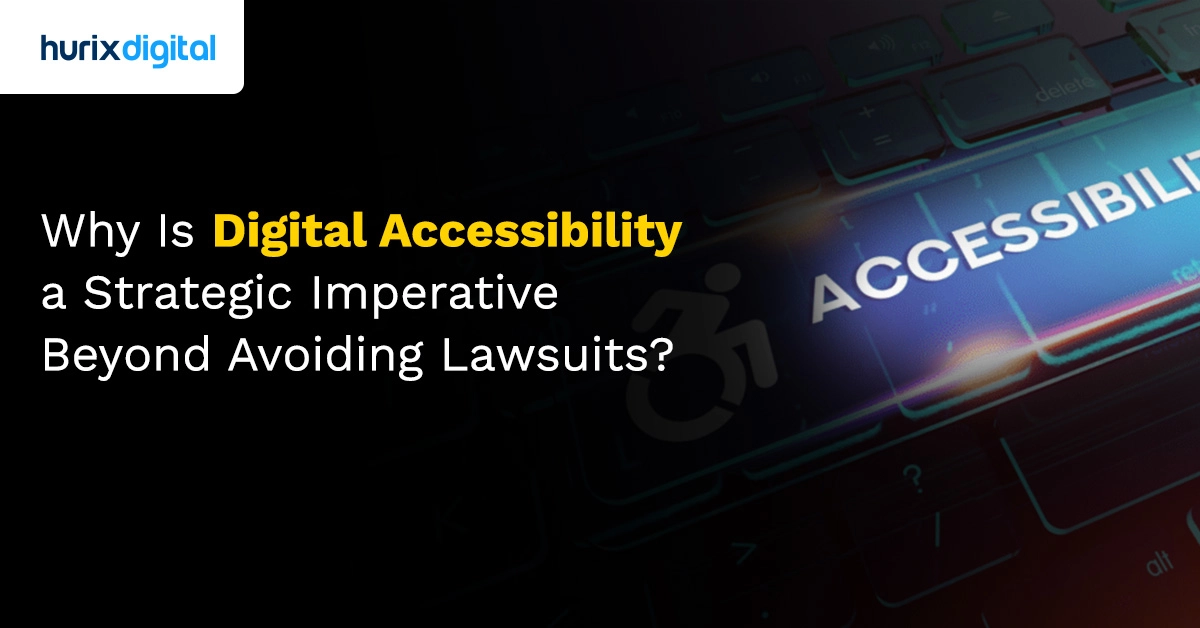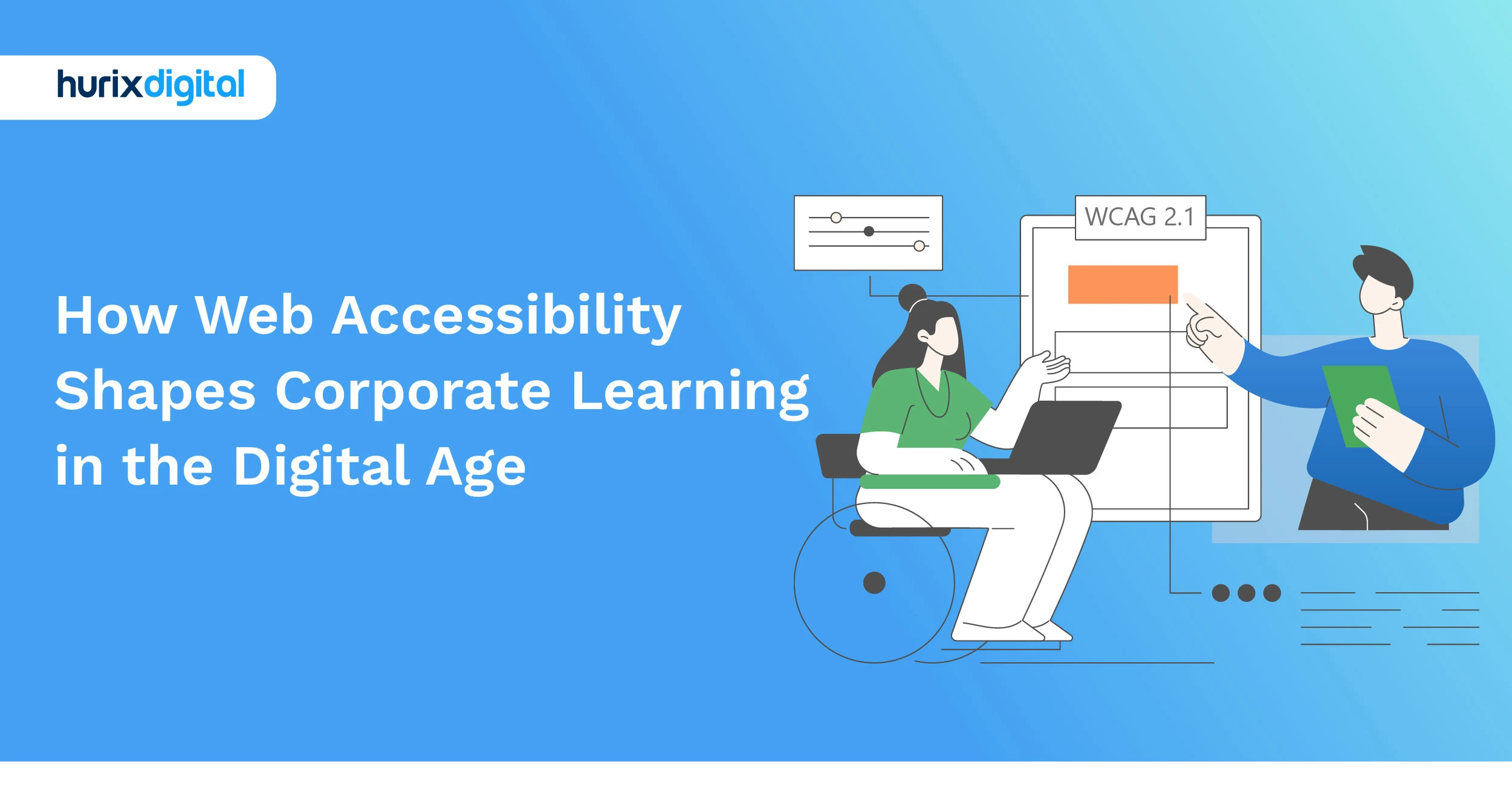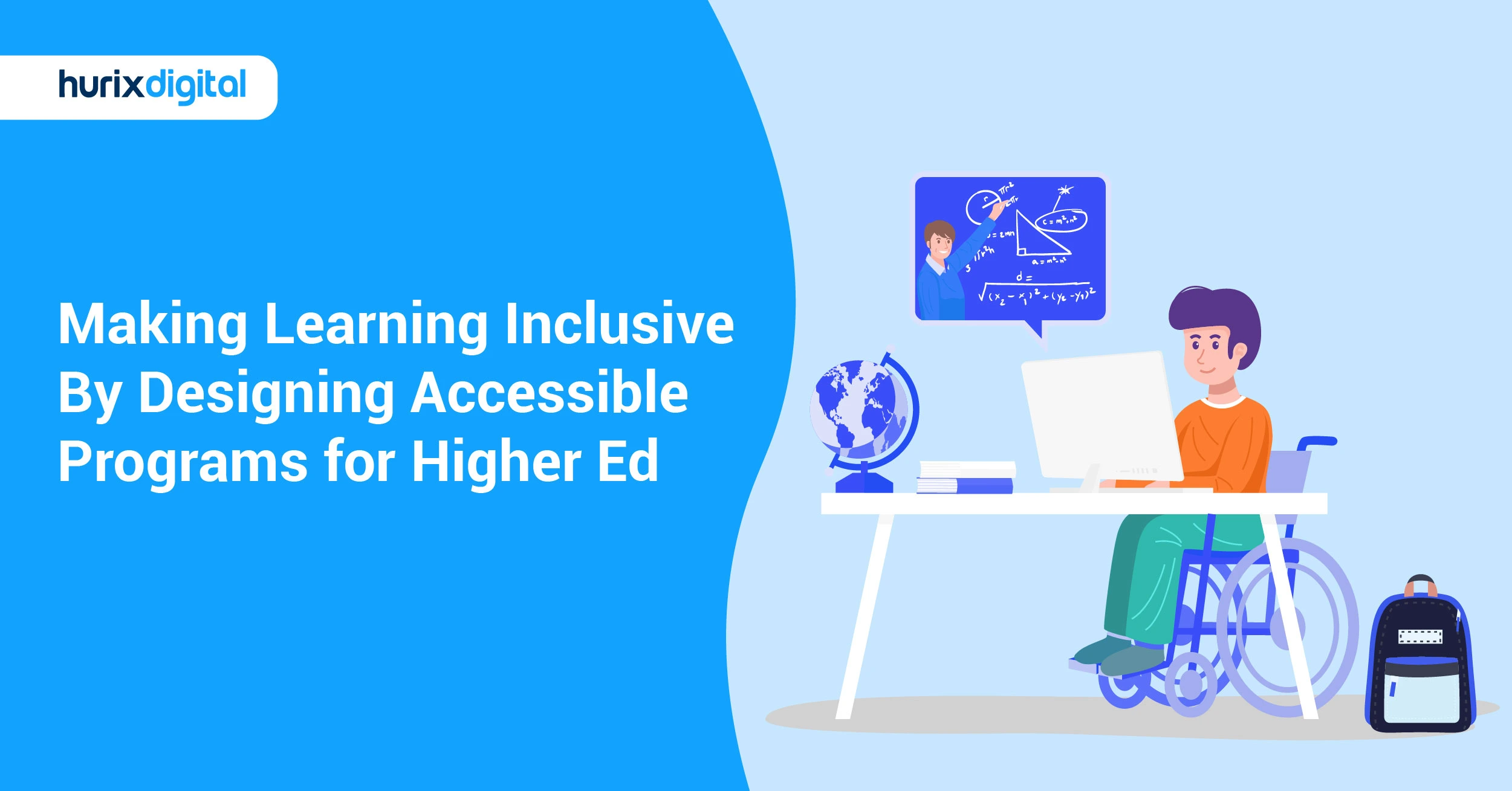
Making Learning Inclusive By Designing Accessible Programs for Higher Ed
Summarize with:
Do you aspire to craft engaging and educational learning programs that reach every corner of your institution? In the digital age, online learning accessibility is not just an optional luxury but a crucial part of inclusive education. With reports projecting a rise in demand for digital accessibility, it’s imperative to equip your higher education institution to meet accessibility standards.
The need for accessibility in higher education has dramatically heightened in the present context, where digital platforms form a core part of learning and administration. In fact, almost 80% of students and professionals believe digital accessibility should be a priority.
For a higher education institute, considering cost is inevitable, but investing more in an accessible curriculum should be part of the decision. This article presents reasons to work on an inclusive curriculum.
Table of Contents:
- Understanding the Importance of Online Learning Accessibility
- Understanding Accessibility in Higher Education
- The Americans with Disabilities Act (ADA) and Its Impact
- Ten Reasons to Consider Higher Education Accessibility Than Cost
- Following up on Legal Compliance
- Making Use of Web Accessibility
- For a Diverse Student Ratio
- To Improve Reputation
- Making Use of Assistive Technology
- Create a Better Learning Environment
- Increase Retention Rates
- Increased Demand For Accessible Software
- For Long-Term Cost Savings
- Support from the Community and Alumni
- Things to Consider When Creating an Inclusive Curriculum
- Steps to Incorporate Accessibility Compliance in Higher Education
- Real-World Examples of Inclusive Education Programs
- Future Trends in Accessible Online Learning for Higher Education Institutions
- Conclusion
Understanding the Importance of Online Learning Accessibility
Everyone deserves to have the opportunity to learn and gain knowledge. The beauty of learning lies in its universality, and conceptualizing programs that ensure online learning accessibility is a step towards maintaining that universality in higher education institutions. The connection between accessibility and learning is highly significant, as it enables more students to encounter pathways towards knowledge acquisition.
- Imagine a student with auditory disabilities. By ensuring the institution’s online learning setup is in line with accessibility standards for higher education, closed captioning and transcripts ensure an equal learning opportunity.
- Consider a visually impaired student. Rather than excluding them from graphics-heavy courses, we can rely on assistive technology in education. Tools such as screen readers and Braille displays can provide these students with an inclusive learning environment to thrive.
- Compliance with A11Y standards isn’t just an obligation but also a representation of commitment to disability inclusion in education. By adopting the guidelines of Web A11Y and employing accessibility software, you’re proactively working to meet the needs of all learners.
- Employing inclusive course design and accessible e-learning is one of the greatest steps we can take in the digital age to ensure equal opportunities for all.
Understanding Accessibility in Higher Education
The Americans with Disabilities Act (ADA), originally passed in 1990, has been a cornerstone in this evolution, setting the stage for how educational institutions must cater to the needs of students with disabilities.
Over the years, the ADA compliance framework has expanded to include digital platforms, ensuring that students with disabilities can access online courses, digital libraries, and other educational resources.
Key Statistics Highlighting the Need for Accessibility
Key statistics underpin the need for comprehensive digital accessibility services within higher education. One report by the National Center for Education Statistics reported that 15% of all public school students received special education in the years 2022–23. That is a great number of students, and educational content needs to be made accessible.
This was accelerated with the COVID-19 pandemic, building on the imperative to ensure that all students, regardless of physical and cognitive abilities, can participate fully in the educational experience.
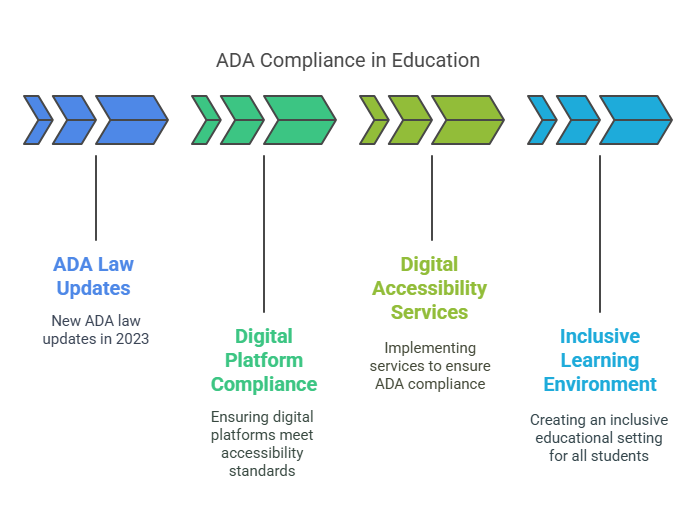
The Americans with Disabilities Act (ADA) and Its Impact
Here is how the increasing awareness of the ADA has impacted students and the education system at large:
1. New ADA Law: What You Need to Know
New updates to the ADA law, as of 2023, have created a significant threshold in what is considered a compliant digital platform.
Programs must ensure that all web content, from the courses to administrative portals, is accessible for students with disabilities. This covers text, audio, and visual alternatives, compatibility with screen readers, and ease of navigation for students who use assistive technologies.
2. The Role of ADA in Digital Accessibility Services
Digital accessibility services are increasingly significant in ensuring ADA compliance in higher education. Audits of existing digital platforms to staff and faculty training in accessible content development are good practices here.
Utilizing these services helps institutions meet the legal requirements prescribed by the new ADA law and provide an inclusive learning environment for all their students.
Ten Reasons to Consider Higher Education Accessibility Than Cost
When discussing the importance of higher education, it’s crucial to recognize that accessibility often outweighs the mere cost of tuition. Let’s see what you can do as an educational institute:
1. Following up on Legal Compliance
Having curriculum access isn’t limited to good practice but is also an accessibility compliance. Institutes need to follow ADA compliance in education. ADA (Americans with Disabilities), which came into law in 1990, defines prohibition of any kind of discrimination towards students with disabilities getting education. By actively making your higher education curriculum accessible, institutes present their responsibility towards equal education.
2. Making Use of Web Accessibility
With the advent of web accessibility compliance, higher education establishments are focused on equal access to education and have a social duty to assist students with disabilities.
Adopting online accessibility standards can benefit colleges and universities. For instance, web accessibility can broaden the reach of their curriculum, boost student happiness, and increase potential students’ curiosity. Institutions can increase enrolment, revenue, and acquisitions by making themselves more accessible to students.
3. For a Diverse Student Ratio
Higher education institutes offer admission to a broader range of students and those with disabilities. Developing an accessible curriculum promotes diversity within your student body by making your content available and understandable to a broader audience.
4. To Improve Reputation
Education institutes that put accessibility first are seen as progressive and dedicated to the welfare of their students. By making this pledge, your institute can attract teachers and staff who appreciate inclusivity in addition to students, thus improving its reputation.
5. Making Use of Assistive Technology
Assistive technology is the best investment for students with disabilities and one way to offer curriculum accessibility. From laptops to computer-assisted instruction, there are different ways in which assistive technology can prove effective.
6. Create a Better Learning Environment
Accessibility improvements created for disabilities help in having a promising learning environment and frequently help all students. For example, captioned videos help students who have hearing disabilities as well as those who learn best visually or who are not native English speakers and would benefit from written reinforcement.
7. Increase Retention Rates
Having easy access to resources makes learning more enjoyable and may raise retention and graduation rates. Easy access to course materials increases students’ likelihood of staying in class and finishing their degrees, which raises graduation rates.
8. Increased Demand For Accessible Software
Software accessibility has made the reach of higher education institutes’ curricula easy. It is designed to meet the needs of students with disabilities and ensure an equal opportunity to educate themselves. The software considers the diverse needs of people with impairments, such as those who have speech, hearing, vision, or physical restrictions. This ensures that they will have no trouble using and accessing the program for curriculum.
9. For Long-Term Cost Savings
For higher education institutes, the initial investment towards curriculum accessibility may be increased, but in the long term, it can help in cost-saving. Using universal design principles can help you save time and money by lowering the likelihood that courses will need to be retrofitted in the future.
10. Support from the Community and Alumni
Alumni and the larger community frequently praise institutions that place a high priority on accessibility. Being inclusive will encourage alumni and community people to support you, which can result in more donations and collaborations.
Things to Consider When Creating an Inclusive Curriculum
To create an effective inclusive curriculum as a part of higher education accessibility, institutes need to consider a few things:
1. Identify Learning Needs
When creating an inclusive curriculum, ensure you identify the learning needs of students with disabilities. This identification will help you make the required modifications for easy understanding.
2. Establish the Right Settings
Establish a setting that encourages cooperation and teamwork among kids. You can also enlist the aid of parents, guardians, and the community to support pupils. You can encourage kids to ask for comments and ideas for improvement without holding back and to be receptive to involvement and communication.
3. Identify Tasks
Teachers will encourage students to share their experiences and viewpoints by designing tasks that require them to collaborate in pairs or small groups. This will help make classroom activities inclusive and collaborative.
4. Establishing The Culture
Establish a culture of ongoing assessment and development by evaluating the success of accessibility initiatives, getting input from educators, parents, and students, and modifying and improving programs in response to their observations.
5. Use Universal Design for Learning
Use Universal Design for Learning (UDL) to create instructional materials, websites, and other resources for your education institute and to distribute the curriculum. UDL gives students more ways to interact and consume content. UDL works on three different principles-
- Various means of interaction
- Multiple means of action and expression
- Representation
Steps to Incorporate Accessibility Compliance in Higher Education
Developing learning programs that are readily accessible to all is of paramount importance for higher education institutions. It’s crucial, inclusive, and equally important. It’s a legal requirement under various regulations.
But how exactly can you implement accessibility compliance in higher education? Below are some key steps:
1. Apply a Universal Design for Learning (UDL) Framework
The Universal Design for Learning (UDL) is a proven educational framework that helps to improve and optimize teaching and learning for all people based on scientific insights into how humans learn.
Applying this framework can ensure equal opportunities for all students, including those with disabilities. The UDL framework encourages educational institutions to provide multiple means of engagement, representation, action, and expression.
- Offering content in different formats: video, audio, visual diagrams, and text.
- Providing alternatives for demonstrating learning: tests, presentations, projects, and discussions.
- Engaging students in different ways: group work, interactive lessons, discussions, and self-paced learning.
2. Ensure Web A11Y on Online Platforms
Web A11Y standards are universal protocols set by the Web Accessibility Initiative (WAI) to promote online inclusion. This means ensuring that online course materials and digital learning platforms are accessible to all, including those using assistive technology in education.
- Use accessibility software to evaluate current learning platforms and make necessary adjustments to ensure compliance with Web A11Y.
- Make use of text-to-speech features, captions for videos, and alternative text for images.
- Always provide downloadable materials in various accessible formats, such as PDF, Word, and HTML.
3. Incorporate Inclusive Course Design Techniques
In addition to the structure of your digital platforms, the content of your courses should also be inclusive. This involves utilizing methods that ensure the course content is accessible and provides equal learning opportunities for all students.
- Use a variety of teaching methods to address different learning styles. This includes lectures, discussions, hands-on activities, online exercises, and multimedia presentations.
- State learning objectives and use consistent navigation and formats across all course contents.
- Provide resources and materials that reflect a variety of perspectives and experiences. This increases its relevance to a diverse group of students.
By following these steps, you are not only promoting disability inclusion in education but also catering to a diverse group of learners. It prepares students for the diverse professional world, promotes a more inclusive culture on campus, and, most importantly, helps all students reach their full potential.
Real-World Examples of Inclusive Education Programs
All around the world, new and established education programs are setting excellent examples of how to effectively implement accessibility software and advance the cause of disability inclusion in education. For instance, the Massachusetts Institute of Technology (MIT) offers a program that is entirely committed to creating accessible e-learning content, thus displaying a significant effort towards online learning accessibility.
Similarly, the University of Washington’s Accessible Technology Services has proved to be a game-changer. This service was designed with the specific goal of enhancing web a11y and ensuring a11y compliance while also providing training and resources to its staff members.
Furthermore, the University of Illinois at Urbana-Champaign annually organizes an event called ‘Accessibility in Action.’ This vibrant gathering becomes a nexus for educators, policymakers, and technology gurus to come together and engage in value-added discussions. They discern and exhibit innovative techniques to fulfill the A11Y standards and accomplish accessibility compliance in higher-education institutions, echoing cooperation’s potential in catalyzing transformation.
Future Trends in Accessible Online Learning for Higher Education Institutions
As we face the future, a few prominent trends have emerged that highlight the direction that accessible online learning is headed in higher education. First, expect an increased focus on web accessibility (Web A11Y) standards.
It will ensure institutions align their online learning tools with vital guidelines that provide equitable access to all users, including those with disabilities.
- Another growing trend is the integration of AI-powered accessibility software. AI can help automate transcribing and captioning course content, improving accessibility for students with hearing impairments.
- Next, we have inclusive course design that focuses on creating courses that are inherently accessible. This approach goes beyond compliance, offering adaptations and alternatives that make content flexible for all learners.
- We also predict a rise in the use of AR and VR technology to foster an interactive and immersive learning environment, offering new perspectives on educational material for visual learners and those with sensory processing conditions.
- It’s time for institutions to embrace A11Y compliance as the norm rather than an afterthought to ensure a seamless e-learning experience.
Conclusion
Online learning accessibility is essential in education across all eras. Institutes must focus on integrating key accessibility features into eLearning modules to ensure inclusive education for all. By investing in the right software and solutions, institutions can unlock numerous benefits, especially for students with disabilities.
Prioritizing online learning accessibility in your curriculum is a forward-thinking strategy that supports students, enhances your institution’s reputation, and drives long-term success. For institutions exploring modern teaching and learning technologies, Hurix Digital is the ideal partner. From competency-based education to video learning and consulting, Hurix Digital empowers institutions to make their curriculum truly accessible.
Contact us today!
Summarize with:

Vice President – Content Transformation at HurixDigital, based in Chennai. With nearly 20 years in digital content, he leads large-scale transformation and accessibility initiatives. A frequent presenter (e.g., London Book Fair 2025), Gokulnath drives AI-powered publishing solutions and inclusive content strategies for global clients
 Upcoming Masterclass | Build an Army of Brand Evangelists using Training & Development | November 20th, 8:30 AM PDT | 11:30 AM EDT | 10:00 PM IST
Upcoming Masterclass | Build an Army of Brand Evangelists using Training & Development | November 20th, 8:30 AM PDT | 11:30 AM EDT | 10:00 PM IST

